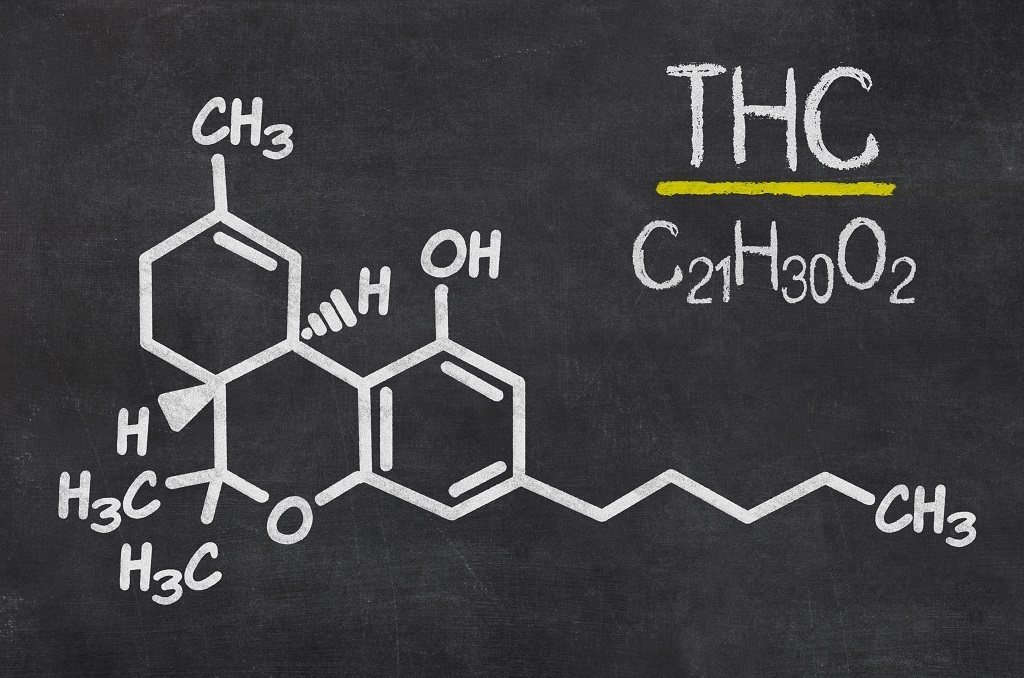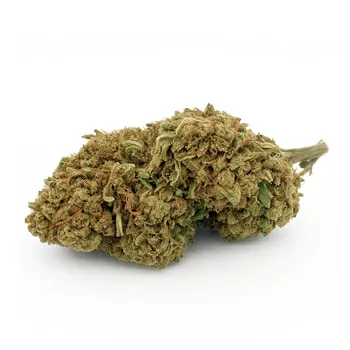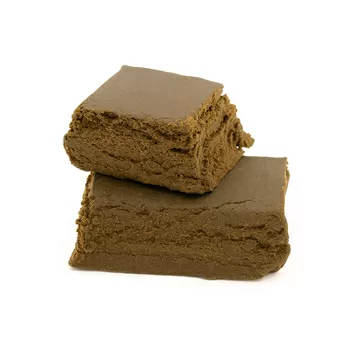THC is the most important psychoactive substance in cannabinoids, and the active substance that can produce the typical euphoric effects after cannabis consumption. These effects can appear very quickly when inhaled and from 30 minutes to 2 hours when ingested. However, just as these times are variable in terms of the perception of the typical cannabinoid action, the permanence of THC in the blood is also particularly susceptible. This is precisely the question most frequently asked by regular marijuana users: how long does THC remain in the blood? How long does it remain in the urine?
The length of time THC remains in the bloodstream, which is always very approximate, can be defined as between 4 and 12 hours after consumption, although in the case of regular marijuana users, the substance can be traced for days or even weeks. The particular susceptibility depends not only on the method of consumption, but also on the amount of the substance consumed as well as the frequency of consumption, and it is because of these specific variables that it is unlikely to be able to establish how long THC remains in the blood and urine by a 'rule of thumb'. In this article, however, we have compiled some useful information on how to manage THC intake and how to dispose of the active substance quickly.
How long does Thc last in the body and how long can it be detected by tests?

Tetrahydrocannabinol, or THC, is the psychoactive substance par excellence in cannabis: this active ingredient is responsible for the typical effects of taking marijuana, but it remains in the bloodstream for several days to several weeks: The length of time for which this substance remains in the body, in the blood and in the urine, and which can be detected by drug tests, varies depending on many factors, such as the individual's body fat percentage, the frequency of consumption, the amount of weed taken and the sensitivity to drug tests.
Drug tests can easily detect tetracannabidiol or THC in the blood, hair and urine for a considerable number of days after consumption, whereas saliva tests can only detect it for a few hours due to the body's ability to metabolise the substance. THC, however, is a fat-soluble chemical, which means that it binds to body fat, thereby increasing the time it normally takes to dispose of it.
Numerous studies have been conducted on the timeframe within which tests are able to detect the presence of THC in blood and urine, and which set different averages. One study conducted in 2017 and published in the Iranian Journal of Psychiatry estimates that it is possible to detect THC in the blood even three days after cannabis consumption by means of a simple joint. However, the same study points out that the time frame for THC detection may vary, as it is closely related to the frequency with which the user smokes marijuana.
In first-time cannabis users, THC can easily be detected for about 3 days, in occasional users this period is about 5 to 7 days. In contrast, in regular, chronic and frequent users, the presence of THC persists for about 30 days or more. The so-called 'windows of detection' also depend on the type of drug test carried out by the subject: urine tests can detect THC for approximately 3 to 30 days after use, whereas saliva tests can only detect it within 24 hours of use. Hair tests can detect tetracannabidiol for up to 90 days after use, although this diagnostic method includes the possibility of detecting false positive results. Blood tests can only detect THC within 3 to 4 hours of use.
Unlike CBD weed flowers, there is only one cannabinoid that can be detected and subject to penalty, tetrahydrocannabinol or THC, the main culprit of the so-called marijuana high.
The totally legal counterpart that is not detected by drug tests (precisely because it is not psychoactive) is cannabidiol or CBD, a substance widely regarded in the medical field for its anti-inflammatory, relaxing and pain-relieving effects. Not only that, CBD or cannabidiol, derived from cannabis sativa in the form of CBD oil, is regarded as a natural remedy for insomnia by facilitating rest and sleep quality.
Whereas THC, where there are legal limits, must be below 0.2% in light cannabis to be considered legal (with a tolerance of up to 0.6%). Above these values it is illegal cannabis.
Drug tests are therefore able to detect relatively small amounts of THC, but only a few studies have been able to quantify the active ingredient needed to fail the tests, claiming that regular and chronic users are less likely to pass the tests than occasional users.
A 2012 study published in the journal Clinical Chemistry examined a sample of marijuana users in the form of joints at a concentration of 6.8 % THC. Using a particularly sensitive urine test, the study found an increase in THC concentration hours after consumption: regular and chronic smokers had a constant THC concentration of 100%, while occasional users had a reduced THC concentration of around 60%.
In a 2017 study, hair samples from 136 infrequent, occasional and regular marijuana users were examined. The study used 1 cm sections of hair to detect cannabis use from as long ago as the previous month. Approximately 77 % of chronic smokers and 39 % of occasional users produced positive drug test results, suggesting that false positives are rare.
There are therefore many variables that can influence the presence of THC in blood and urine, since each user is different, due to their physical characteristics and the way they often use the drug. The test has a significant influence on the detection of THC: greater reactivity on the part of the drug test will make it easier to detect low concentrations of the active substance over a relatively long period of time. The same amount of THC taken can certainly make a difference: the effects of tetracannabidiol are cumulative, which means that constant cannabis intake throughout the day or over a longer period of time is more likely to lead to positive test results.
Sex and body fat are both physical factors that can impact on the metabolisation of THC, since it is a fat-soluble active and tends to bind to the body's fat component. A high concentration of fat mass will therefore mean a longer time to dispose of tetracannabidiol, and the same is true for women, who tend to have a higher concentration of body fat than men.
The same applies to women, who tend to have a higher concentration of body fat than men. In fact, no one can say for sure how long the marijuana test will be positive, since the rate of THC metabolism varies depending on the individual and the amount of marijuana consumed, and these factors can alter the time window within which the body retains traces of the active ingredient, for which the tolerance threshold is 50 ng/ml.
How to get THC out of the blood and body sooner
THC is the main active ingredient in cannabis and the chemical factor involved in the so-called psychoactive effect. However, drug tests, particularly urine tests, can detect THC-COOH, a metabolite of THC, which is produced when the liver breaks it down and remains in the body for a much longer period of time. However, there are a number of measures and best practices that can help to dispose of THC more quickly in both blood and urine, so that any tests and analyses can easily give a negative result.
How long the herb stays in the urine: why dilute the urine by drinking water
In order to obtain a negative drug test result, a maximum of 50ng THC-COOH per ml of urine is required. Drinking large amounts of water a few minutes before filling the urine container may help to dilute the sample and reduce metabolite concentrations below the threshold.
However, it should be borne in mind that excessive amounts of liquid may also make dilution deleterious and may lead to the need for further investigations. It is therefore important to stimulate diuresis as much as possible in the 24 to 48 hours prior to the test in order to reduce the amount of metabolites detectable in the urine sample as much as possible and to take creatine and B vitamins, preferably B2 and B12 in quantities of 50-100 mg, which will bring the urine back to its conventional straw yellow colour.
Taking zinc
Numerous studies have shown that zinc can act as a urinary adulterant and lead to false-negative results in a urine drug test by interfering with the traces of THC detectable in the samples over a period of approximately 12 to 18 hours. Taking this type of supplement in capsule or powder form following the intake of cannabis and prior to testing can certainly help in obtaining a negative result.
Quitting smoking
Quite simply, when a drug test is imminent, the most useful suggestion is to stop taking cannabis immediately so as to remove as much of the metabolites from the body as possible, or at least make them less detectable. The longer you abstain from marijuana use, the greater your chances of passing the test.
Taking detoxifying drinks
Taking detoxification drinks facilitates the reduction of THC in the urine: they have the function of expelling or concealing the presence of THC and its metabolites in the body. These dietary supplements contain diuretic substances that stimulate urination, thereby reducing the chances of obtaining positive test results. Ready-made preparations are commercially available, but the use of currant juice, lemon juice and coffee juice can also be used as an alternative, as they significantly reduce the concentration of THC metabolites.
Using active carbon
Another method of easily passing the drug test is the use of activated charcoal, which is also used in medicine to manage overdoses, as it binds to multiple active substances and helps them to be excreted. THC and its metabolites have a rather long half-life, due to what is known as enterohepatic recirculation.
After consumption, THC is broken down into the metabolite 11-OH-THC and then into THC-COOH, which in turn is further broken down into THC-COOH-glucuronide, which is then excreted in the urine and faeces. Specific bacterial enzymes in the intestines cause the metabolites to remain in the body for a long time by converting THC-COOH-glucuronide into THC-COOH, which is then reabsorbed through the bloodstream. Activated charcoal binds to THC metabolites, including THC-COOH and THC-COOH-glucuronide, preventing this process from taking place and preventing the metabolites from being absorbed and excreted. It is one of the most effective remedies, as confirmed by scientific research: in vitro studies have shown that 5mg of activated charcoal can bind to 1mg of THC-COOH or THC-COOH-glucuronide.
The easiest way to take activated charcoal is with the aid of capsules, although it can also be consumed with baked goods such as activated charcoal bread.
Praticare sport
THC metabolites are stored in fat cells, which is why overweight people are more likely to test positive for THC in drug tests than normal-weight people: the greater the fat mass, the more THC can be traced. It is therefore important to engage in constant sporting activity in order to maintain a correct body weight and a significant lean mass index, thereby promoting sweating and increasing the body's ability to dispose of THC rapidly.
Follow a balanced diet rich in fibre
If you are slightly overweight, it is important to combine sporting activity with a healthy, well-balanced diet that can reduce your body weight by a few kilos in the run-up to the test. It is therefore better to choose protein-rich, fibre-rich, wholemeal foods that help the body to excrete metabolites through the intestines rather than through the urine.
Is the THC test bought at the pharmacy reliable?
The THC test is a drug test designed to self-assess the levels of the active ingredient in urine. It is particularly quick to perform and can provide preliminary analytical data that, in the event of a positive result, require further investigation using more specific tests. It is therefore a screening test based on the so-called immunochromatographic method and on the principle of competitive binding: in fact, it involves the collection of a common urine sample inside a specially prepared container, in which a litmus paper is placed, on which specific sites are placed to which special antibodies adhere. The urine, which has non-standard concentrations of metabolites, once in contact with the strip, will be coloured differently depending on the concentration of THC present, through a mechanism of action by the metabolites themselves, which replace these antibodies by adhering to their respective sites, thus confirming the concentration. If the colour of the map remains unchanged, the test result is obviously negative.
Useful and effective, as well as being absolutely reliable, the THC test is readily available in pharmacies and suitable for those who need to monitor the presence of tetracannabidiol in their bodies at home and with extreme discretion.
 Italiano
Italiano Español
Español English
English Français
Français Deutsch
Deutsch



